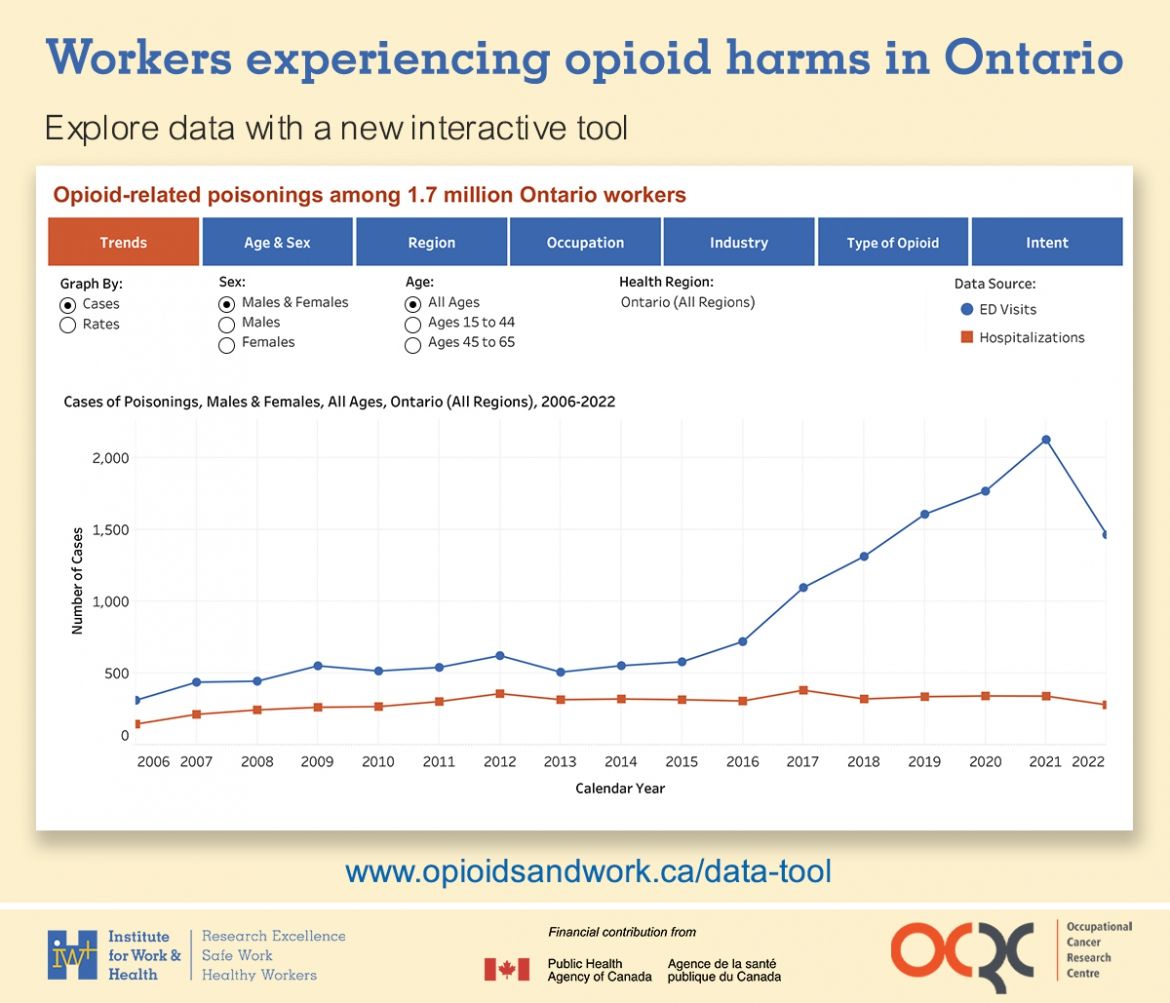A new tool has just been launched to illustrate patterns of opioid-related harms among Ontario workers.
The Opioids and Work Data Tool is an interactive, web-based data visualization tool used for exploring data on cases and rates of opioid-related harms occurring among a large group of Ontario workers from the Occupational Disease Surveillance System (ODSS). It was created through a collaboration between the Institute for Work & Health (IWH) and the Occupational Cancer Research Centre (OCRC).

In the face of an unprecedented public health crisis involving opioid-related poisonings in North America, the researchers on the project behind this tool are aiming to establish a surveillance program to monitor opioid-related adverse health events among Ontario workers. They also aim to identify worker groups at the greatest risk of harm.
In Canada, between January 2016 and September 2022, there were over 34,000 opioid-related deaths. Rates of fatal opioid poisonings have been highest among working-aged males, in particular those between the ages of 30 and 49.
The large numbers of opioid deaths in recent years have piqued interest in understanding the factors that may give rise to these events, including whether occupation may play a role,
says Dr. Nancy Carnide, IWH scientist and co-lead on the project. Our team is aiming to fill this knowledge gap by adapting and expanding an existing system, the Occupational Disease Surveillance System, which could be used to answer such questions.
The ODSS contains data on 1.7 million Ontario workers with an accepted lost-time workers’ compensation claim for a work-related injury or illness between 1983 and 2019. Included in the data is a worker’s occupation at the time they experienced their work-related injury or illness. This information has been linked to healthcare data to identify hospitalizations and emergency department visits for opioid-related harms that occurred subsequent to the claim.
The tool includes three dashboards, each displaying data for a different opioid-related harm (poisonings, mental and behavioral disorders—for example, dependence syndrome or withdrawal state—and adverse reactions) identified in emergency department and hospitalization records. The tool is also interactive, allowing viewers to customize the graphs according to factors such as age, sex, date of injury, outcome type, public health unit, occupation, industry, and nature of injury.
The goal in producing this tool was to allow members of the public the ability to access information from within the ODSS to better understand patterns of opioid-related harms in this group of workers, as well as the characteristics of those experiencing harms,
says Dr. Jeavana Sritharan, OCRC scientist and project co-lead.
This tool can also be used by workers, supervisors, managers, employers, and public health professionals to help them understand the extent to which opioid-related harms are occurring in their industry or region. It may shape decisions to address the potential harms of opioid use in occupational health, safety, and wellness programs.
Learn more about this project and explore the tool: opioidsandwork.ca/data-tool